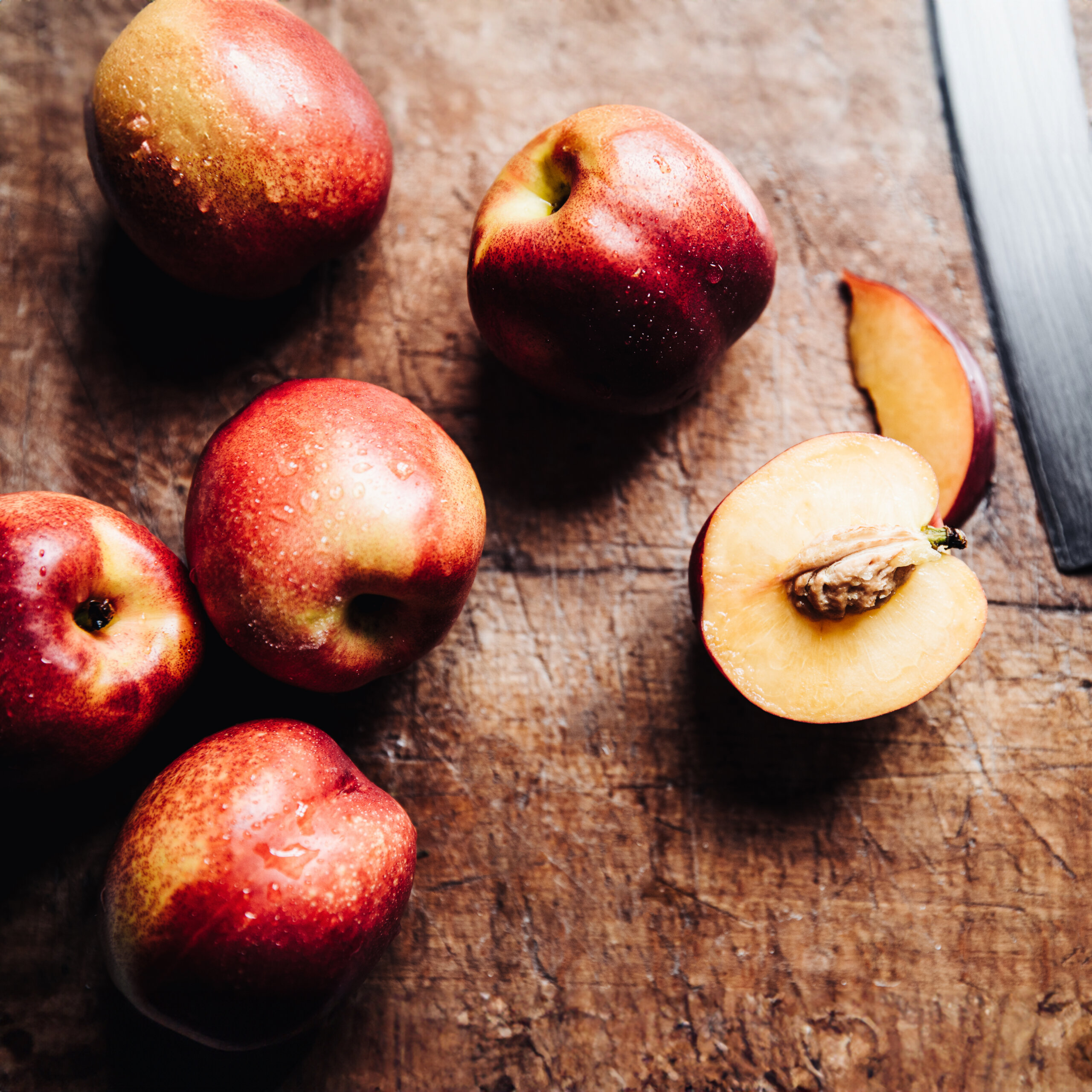Get ready for peaches, cherries, apricots, and more!

Picture this: a hot summer day and the indulgence of a fresh, juicy peach, or a bowl overflowing with ripe cherries and sweet plums. These delights fall under the category of stone fruits, and they’re ready to steal the show as the warm weather rolls in. But what exactly is a stone fruit? Read on for a little stone fruit 101!
Stone fruits are a classification of fruits also known as drupes: They have thin skin and a “stone” in the centre, which contains the seed. Even olives, though we often think of them more as savoury, are stone fruits! There are even some fun hybrid stone fruits like pluots (plum + apricot, favouring the plum more) and apriums (apricot + plum, favouring the apricot more). Whatever stone fruit you choose, one thing is for sure: It is going to be delicious!
Is it Ripe Yet? How do you know when a stone fruit is ripe?
This can vary by fruit, but you will know a stone fruit is ripe when the flesh starts to become slightly softened and there is no more green skin (like on a mango, when the skin turns from greenish to orange). Peaches and nectarines will take about 2 to 4 days to ripen if you buy them when the flesh is still very firm—you’ll know they’re ripe when there’s some give when you gently squeeze the fruit. Apricots can ripen quite quickly (in a day or so), so keep an eye on them and make sure the flesh doesn’t get too mushy. Cherries actually don’t ripen any further after they are harvested, so you can eat them right away when you bring them home.
Are stone fruits healthy?
Absolutely! Fresh stone fruits are a great healthy snack. You can eat them on their own, turn them into a fruit salad or smoothie, or pair them with cheese. Try peaches with mozzarella and basil for a fun twist on a caprese salad!
Fridge or counter?
Most stone fruits can be kept in the fridge once they are fully ripe. This works for peaches, nectarines, apricots, plums, and mangoes. If you buy or pick any of these fruits before they are fully ripe, leave them out on the counter or in a paper bag to ripen before refrigerating. Cherries can be kept in the fridge right away, however, because they do not continue ripening once they are harvested.
What is the season for stone fruits?
Australian summer stone fruit is produced in approximately 26 regions in all states across the country. Victoria and New South Wales lead the charge. The summer stone fruit industry in Australia can be classified into low, medium and high chill production areas.
Low chill summer stone fruits are on the market before October and attract a price premium due to their limited availability at that time. Low chill varieties are produced in the area North of Coffs Harbour in NSW to the Atherton Tablelands in QLD, and in the area north of Gingin in WA.
Medium chill varieties are concentrated in and around Stanthorpe in Queensland, the Central Coast of NSW through to the Sydney basin and south to the Araluen Valley, extending to the warmer inland regions of Swan Hill and the Riverland of SA.
High chill fruit is produced in cooler climates including Southern NSW, the Goulburn Valley in VIC, SA, Southern WA, and Tasmania.




